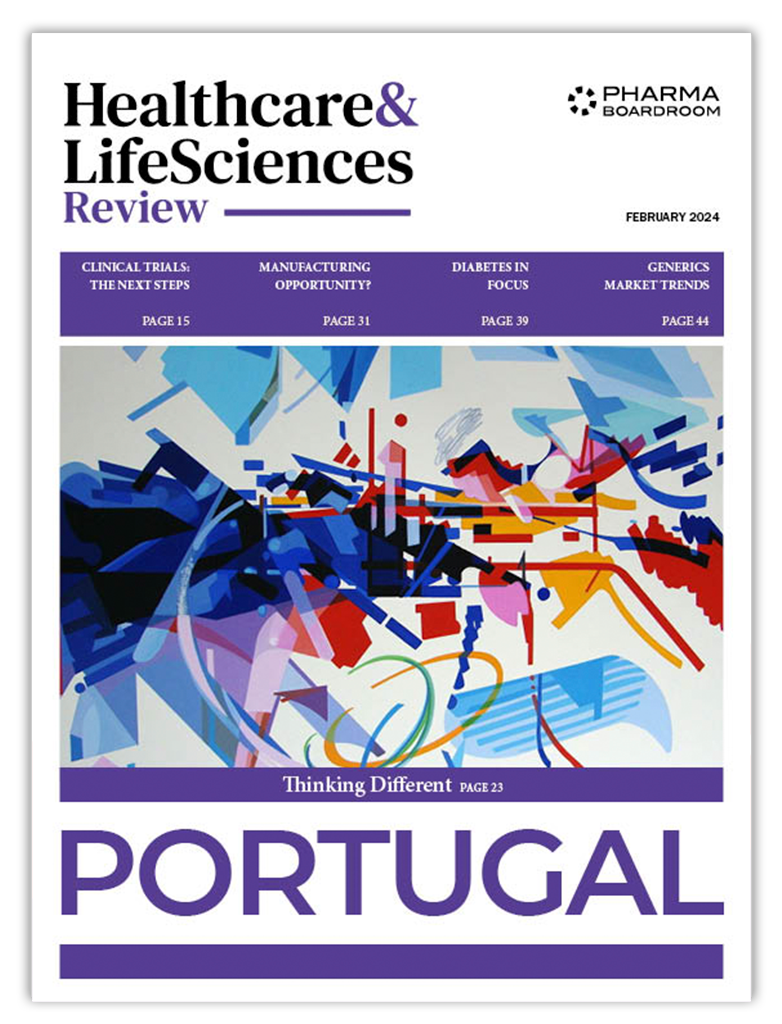The councillor at the Swiss Embassy talks about how the two countries have a particularly close relationship when it comes to pharma, the challenge of introducing innovative products to the Mexican market and why Swiss companies are partnering with both medical academies and the authorities.
Could you please introduce the Swiss Embassy in Mexico? Having recently celebrated your 70th anniversary, what are your current priorities?
Swiss bilateral relations with Mexico date back to 1827 when Switzerland opened a Consulate in Mexico and in 1945 Mexico and Switzerland decided to upgrade their relation and establish diplomatic relations. In 1946, Embassies were inaugurated in Mexico and in Berne. Swiss companies established production facilities in Mexico before that, with one of the first being Nestlé in 1935. Relations between our two countries are close, particularly in multilateral affairs and in international organisations. With regards to the current priorities of the Embassy, we are keen to further the economic development of Mexico and hope that President Peña Nieto’s reforms will be a success.
How would you characterize the trade relationship between Mexico and Switzerland?
We concluded a free trade agreement with Mexico in 2001, as part of the European Free Trade Association, comprising Switzerland, Norway, Iceland and Lichtenstein. Switzerland accounts for 80 percent of the EFTA trade conducted with Mexico, being by far the most important trading partner within this organisation. According to Swiss statistics we import around USD 1.3 billion worth of goods and export around USD 1.5 billion with the country. Pharmaceuticals make up the most important category in this trade relationship, comprising around one third of Swiss exports and 77 percent of imports, due in part to the fact that Swiss pharmaceutical companies produce certain medications in Mexico that are then shipped to Switzerland and other parts of the world.
How do you explain the attraction of Mexico for manufacturing? Why is Mexico an attractive environment for companies?
What we see today is that the production of innovative medicines is increasingly concentrated in a few countries and it is questionable if Mexico will be part of this small group. A lot depends on the framework conditions present within the country and whether the authorities can improve the environment for the production of innovative treatments as well as for research and development. There is a risk that Mexico could lose out on some of the pharma production which it has today to other countries which are making greater improvements in upgrading the quality of their legislation, have a better trained workforce as well as higher standards in the protection of intellectual property and data.
What are the main opportunities and challenges for the healthcare sector in Mexico?
In my view the greatest challenge for Mexico is to give its citizens access to innovative medicines and treatments which allow to control and cure the most frequent health problems. With a population of more than 120 million people, Mexico is a large market which presents real opportunities, yet health does not appear to be a top priority for the government. When one looks at the OECD and WHO statistics concerning the amount of resources allocated to the health sector, Mexico falls well below the average. The challenge is to ensure that innovative treatments reach the Mexican patient in an economically efficient manner. Swiss pharmaceutical companies have submitted strategic proposals to the country’s health institutions, offering to provide medical education, early detection programmes for diseases and cost effective medicines that would result in significant benefits for the patient and ultimately the wider Mexican economy. The detection and treatment of diabetes is one of the major challenges for the country, with it taking an average of two years after the person develops the disease before it is identified. Illnesses are detected and treated very late and this results in high costs to society in terms of labour productivity forgone. This cost to society is much higher than what improving the health system and treating the patients at an earlier stage of their illnesses would cost.
One aspect that has improved considerably over the last few years is the functioning and efficiency of COFEPRIS, as it seeks to become a world class agency. This has recently been recognised also by WHO. The process of validating new molecules has increased, but we still see numerous wealthy Mexicans travelling abroad for their medical treatment. One of the reasons for this is that new innovative products are not available on the Mexican market. As a comparison, Germany registered around 30 new molecules last year, whereas in Mexico the number was just 4. The successful implementation of a robust legal framework that guarantees the conditions required for innovations and investments into the country, combat falsified and illegal drugs and in parallel provide the Mexican population with innovative therapies, is also essential.
One key priority of the Mexican government is to add value to the manufacturing industry as well as investing in biotech. Switzerland is a biotech hub, sometimes referred to as Health Valley, in reference to Silicon Valley. When will we see a health valley In Mexico and how is the Swiss Embassy contributing to fostering innovation in Mexico?
The premise of the Swiss government is that companies are the ones who know best where to invest and what conditions have to be met in order to invest more. The Swiss government sees its role in providing excellent and stable framework conditions within Switzerland as well as with partner countries, with a wide web of modern free trade and investment agreements. This helps companies to invest and trade in a stable economic and legal framework. With regard to Mexico and Switzerland there is a free trade agreement EFTA-Mexico and an investment agreement Switzerland-Mexico in place. However, there is room for improvement. For instance, intellectual property and innovative medicines are not dealt with beyond a reiteration of the WTO TRIPs Agreement. The EFTA- and in particular the Swiss – and the Mexican authorities are currently in discussion about how and when to upgrade and modernize the current agreement.
What is your vision for the healthcare and pharma sector in Mexico for the coming five years and what are the strategic priorities of the Swiss Embassy in the healthcare sector?
A lot depends on the Mexican authorities how attractive the country is for innovation, research and development. Key factors are how well data and IP are protected and how much is invested in the education of researchers and workforce. Swiss pharmaceutical companies see a lot of opportunities in Mexico and are keen to increase their presence in the market, particularly in the area of clinical trials. Assuming that data protection issues are solved in the foreseeable future, new state-of-the-art molecules could be tested on Mexican patients and this will increase investment in local research and development. This in turn will help to make innovative treatments available to a significant number of patients in the country. There are a number of projects where Swiss pharmaceutical companies are partnering with Mexican medical academies and institutions and I am convinced that these partnerships will contribute to developing innovation by Mexican scientists in the future.







